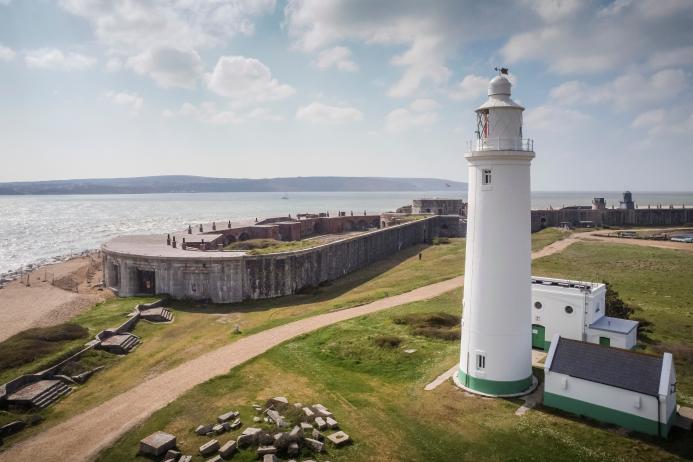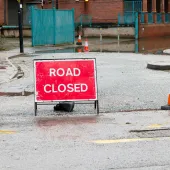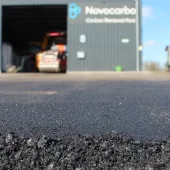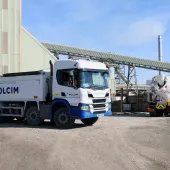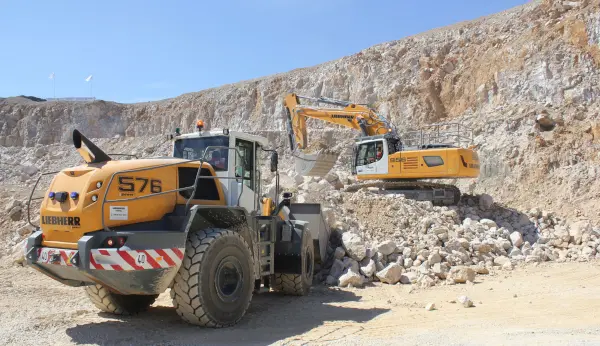Government financial boost for UK flood defences
Aggregate Industries’ Kaziwe Kaulule reassured to see financial support for plans to improve flood risk
THE Government has addressed the growing need for bolstered flood defences across the UK, committing to a record £2.65 billion investment in a move that will protect more than 66,000 homes and businesses. The investment, that will work to both build new barriers and maintain those already existing, is a welcome step forward and emphasizes the escalating need to address river and coastal flooding because of climate change. It comes just weeks after the Environment Agency’s publication of the National Assessment of Flood and Coastal Erosion Risk (NaFRA) in England 2024.
Commenting on the need for this investment, along with adaptation techniques to protect England’s vital infrastructure, as severe weather patterns continues to wreak havoc, Kaziwe Kaulule, managing director of aggregates and CDM at Aggregate Industries, said: ‘The new government investment will see, by March 2026, 52,000 properties and businesses benefit from new flood defences, with a further 14,500 seeing improvements, maintenance, and repairs to existing defences.
‘The recent NaFRA report revealed that approximately 6.3 million properties (both homes and businesses) in England are currently at risk from rising sea and river levels, and surface water flooding. With recent freak weather, such as Storms Bert and Darragh, becoming more frequent and severe, this figure is predicted to rise to around 8 million by mid-century, equating to one in four properties. It’s therefore reassuring to see the Government is putting significant financial support behind its plans to improve flood risk in the UK.
‘As a leading supplier of coastal erosion products and sustainable drainage systems (SuDS), we at Aggregate Industries recognize the critical role that advanced infrastructure plays in enhancing resilience against these growing threats. As an island nation, the UK’s coastal and riverside communities are particularly vulnerable to climate change, rising sea levels, and erosion.
‘The latest statistics for coastal erosion alone show that currently 3,500 properties are at risk, with projections increasing to about 10,100 by the next century. Coastal erosion reshapes the very fabric of our nation, and already we are seeing land which was present 50 years ago vanish. In addition, landmarks which hark back to significant points in our history are already seeing the effects of coastal erosion. In February 2021, a section of Hurst Castle, built by King Henry VIII, in Hampshire collapsed, after the sea exposed and washed away some of its foundations. To ensure the longevity of the heritage site, Aggregate Industries supplied 1,000 tonnes of coastal defence product to the project to negate the impact on the shoreline.

‘Demand for river and coastal defence materials from our Glensanda superquarry in Scotland has risen by 65% since 2019 and we have seen a 28% increase in the past year alone supplied to vulnerable locations across the UK, such as Lincolnshire’s Stallingborough Sea Defence Improvement Scheme and the North Norfolk coastal management schemes in Cromer and Mundesley. This equates to 108 kilotonnes of native quarried rock armour and other water-management products.
‘Surface water flooding is also a significant and growing concern, with 4.6 million properties at risk. The need for vital infrastructure to provide adequate drainage in the UK’s road network is clear and will only increase with rainfall intensity and frequency.
‘SuDS are a critical tool for managing surface water. These systems provide an alternative approach to traditional drainage systems. They mitigate many of the adverse impacts of storm water run-off on the environment in terms of both volume and pollutants.
‘The findings of the NaFRA serve as a call for immediate and sustained action, to which the Government has responded. Together, the industry, along with policymakers, stakeholders, and communities, must prioritize investment in resilient infrastructure and adopt sustainable practices that mitigate the impacts of flooding and coastal erosion.
‘By leveraging innovative solutions and fostering collaborative efforts, we can build a future where our communities are safeguarded against the increasing threats posed by climate change.’

